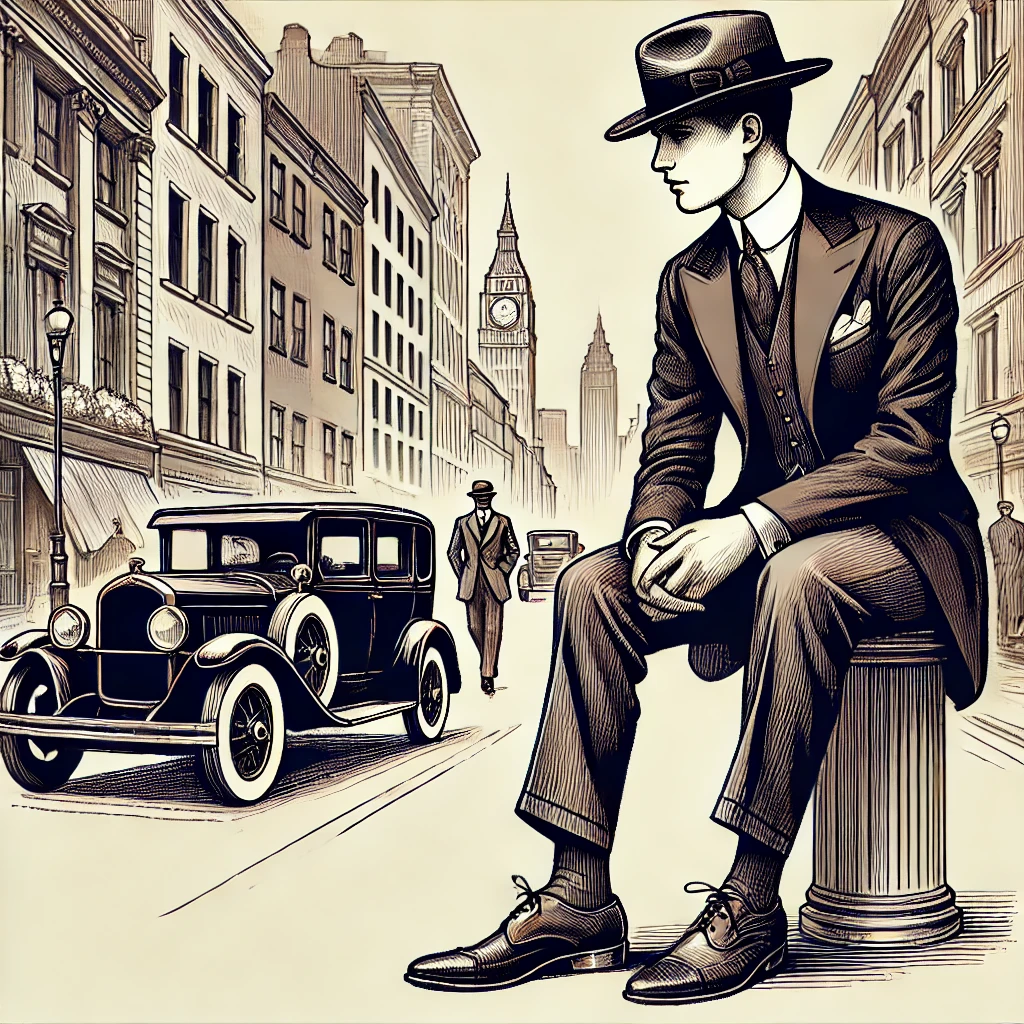The 1920s was the decade of transformation, not only of technology and culture but of men‘s fashion as well. While the world recovered from World War I destruction and entered the Jazz Age, men‘s fashion shifted from austere Victorian formality to a softer, yet fashionable, appearance.
The rise of Art Deco, Hollywood glamour, and the booming economy defined a decade that was sophisticated and modern. 1920s mens fashion today remains a huge influence on menswear today, from intricately tailored suits to vintage accessories.
So how was the fashion of the time so unique?
Why does it continue to influence designers and fashionistas today? Let‘s take a look at the history of 1920s mens fashion.
The Psychology Behind Luxury Products
Why People are So Crazy About Luxury Purchases?
The Evolution of Menswear in the 1920s Mens Fashion
From Formality to Casual Elegance
Before the 1920s mens fashion was very formal, with stiff collars, long coats, and heavy clothing. Post-war decades, however, witnessed a shift towards casual and practical clothing. With increased leisure activities and a growing youth culture, casualwear started gaining popularity alongside traditional suits.
Impact of World War I
The war affected every aspect of life, including fashion. Compulsion towards practicality led to simpler and more comfortable clothing. Military-style clothing, like trench coats and high-waisted trousers, became daily wear.
The Rise of Sportswear
Sportswear was used as everyday clothing for the first time. Tennis sweaters, plus-fours (loose-fitting knickerbockers), and polo shirts became status symbols and symbols of modernity. This trend created the activewear market that we know today.
The Influence of Art Deco
The Art Deco style, with its bold geometric patterns and luxurious materials, had a strong impact on men‘s fashion. Suits became streamlined, accessories bold, and color more expressive.

Key Clothing Items in 1920s Mens Fashion
Suits: The Backbone of Menswear
Suits were a norm but evolved in style in 1920s Mens Fashion:
Jackets grew shorter, with a looser fit and narrower lapels.
Fabrics were wool tweed, herringbone, and pinstripes, typically navy, brown, or gray.
Patterns like checks and stripes added a dash of personality.
Three-piece suits (with a vest) were the rage, especially for formal events.
Pants: A Shift in Silhouette
The Oxford bags, wide-panted trousers, were a favorite in 1920s Mens Fashion among young men and college students.
Knickerbockers, or plus-fours, were the go-to for sports and outdoor activities.
High-waisted pants with suspenders replaced belts as the fashionable way to hold trousers up.
White pants were a summer fashion, paired with light-colored blazers.
Vests: A Fashion Essential
Vests were a layering essential, even worn alone without jackets for a relaxed look.
Collarless vests were a fashion-forward substitute for traditional vests.
Shirts: A New Standard
The 1920s moved away from detachable collars and toward attached ones, making shirts more comfortable.
The penny collar shirt, with its small rounded collar, was a fashion-forward choice.
Outerwear: Keeping It Current
The raccoon fur coat became a status symbol, especially among college men.
Trench coats, inspired by military attire, were a favorite as a daily coat.
Accessories: The Devil is in the Details
Hats: A Must-Have for Every Gentleman
No gentleman’s wardrobe was ever complete without a hat, and various styles were reserved for various occasions:
Fedoras – The fashionable man’s go-to hat.
Bowler hats – Favorite among business men.
Flat caps – A relaxed option for working men and golfers.
Straw boater hats – The summer season accessory of choice.
Ties: Adding a Pop of Personality
- Bow ties were the classic choice for formal wear.
- Knitted ties introduced a more casual, textured look.
Shoes: A Step in the Direction of Modernity
Black patent leather shoes were the formal choice.
Two-tone shoes provided contrast and flair to informal wear.
Other Accessories: Small Touches, Big Impact
- Tie clips and collar pins added a polished look.
- Armbands helped keep shirt sleeves in place.
- Pocket squares introduced a splash of color to suit jackets.
- Spats, fabric coverings worn over shoes, were a status symbol.
Formal Attire: The Pinnacle of Sophistication
In the evening, men adhered to a formal dress code:
Tuxedos had shawl or peak lapels, satin edges, and white waistcoats.
Midnight blue tuxedos emerged as the alternative to black, providing a deeper tone in artificial light.
Morning suits were used for daytime formal wear, consisting of tailcoats and striped trousers.
The Influence of Subcultures
Fashion wasn‘t dictated solely by upper-class society; subcultures weighed in too:
Gangsters like Al Capone popularized pinstripe suits, fedoras, and bling.
The Peaky Blinders gang from Birmingham, England, popularized the classic newsboy cap and heavy wool suits.
1920s Mens Fashion vs. Modern Trends
1920s mens fashion still influences today‘s fashion in the following ways:
Slim-fit suits are a contemporary adaptation of 1920s tailoring.
Oxford bags have reemerged in today’s men’s fashion.
Vintage accessories, including pocket squares and tie clips, are trendy again.
Speakeasy fashion parties are a nod to the glamour of the era.
Conclusion: Why 1920s Mens Fashion Still Matters
The 1920s was a decade of revolution in men‘s fashion, in which tradition and innovation were blended. Its influence can be felt even today, and that is a testament to the fact that great style never actually dies. Whether you’re dressing up for a Gatsby party or simply adding vintage touches to your wardrobe, 1920s mens fashion is an endless source of style inspiration.
Would you wear a 1920s-inspired look today? Let us know in the comments!
